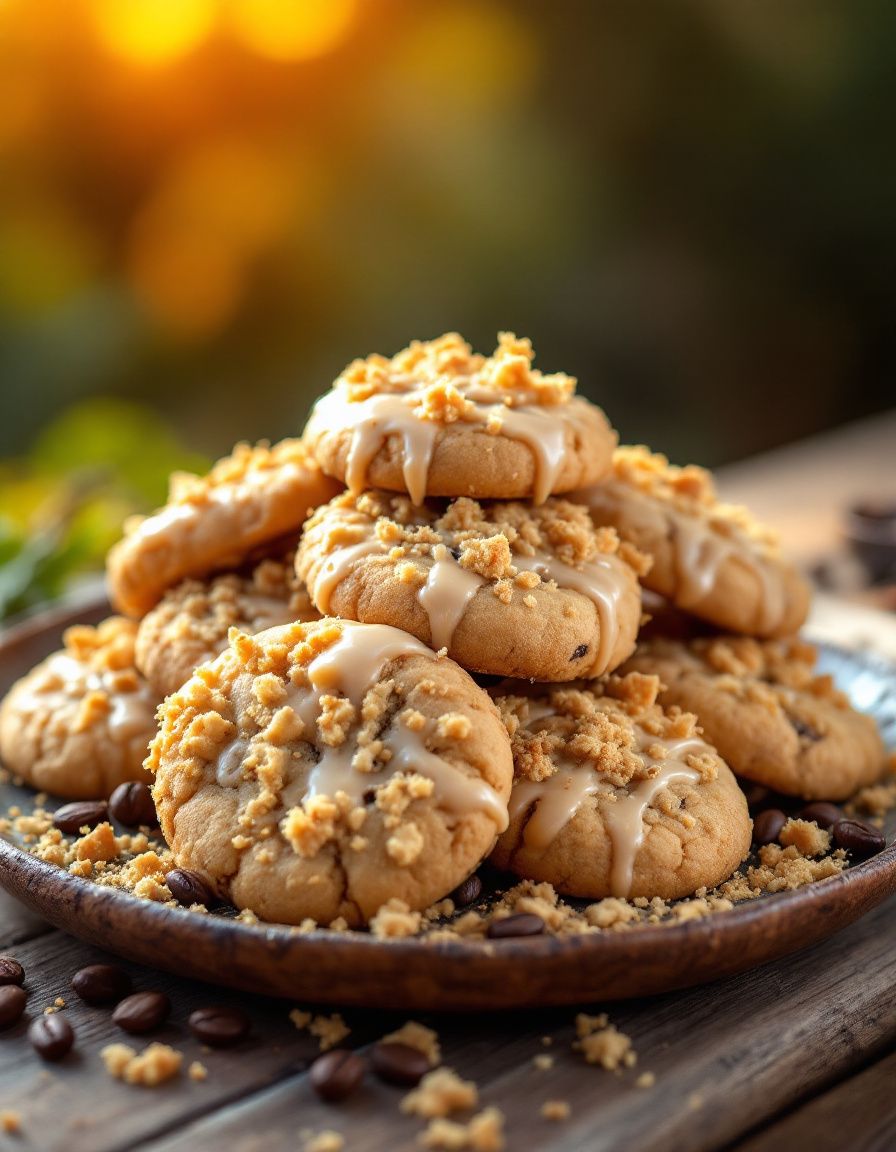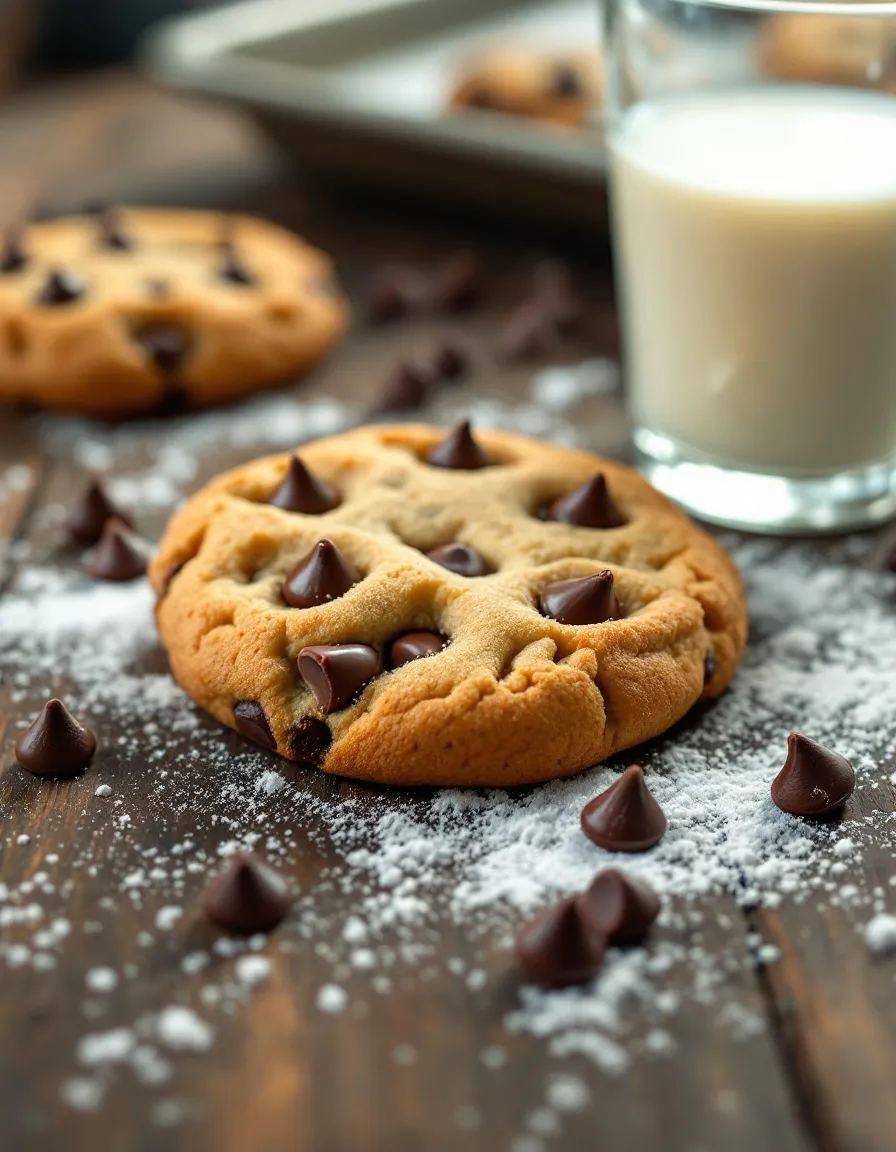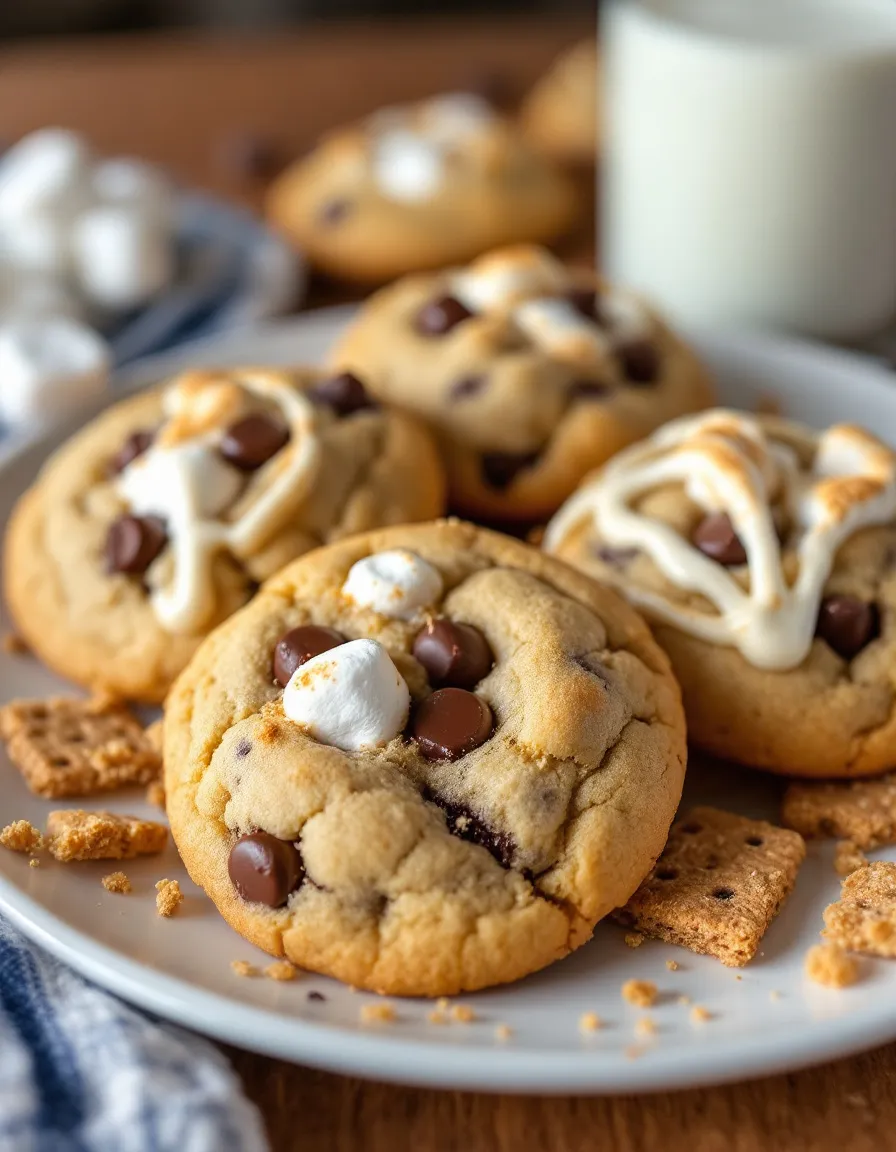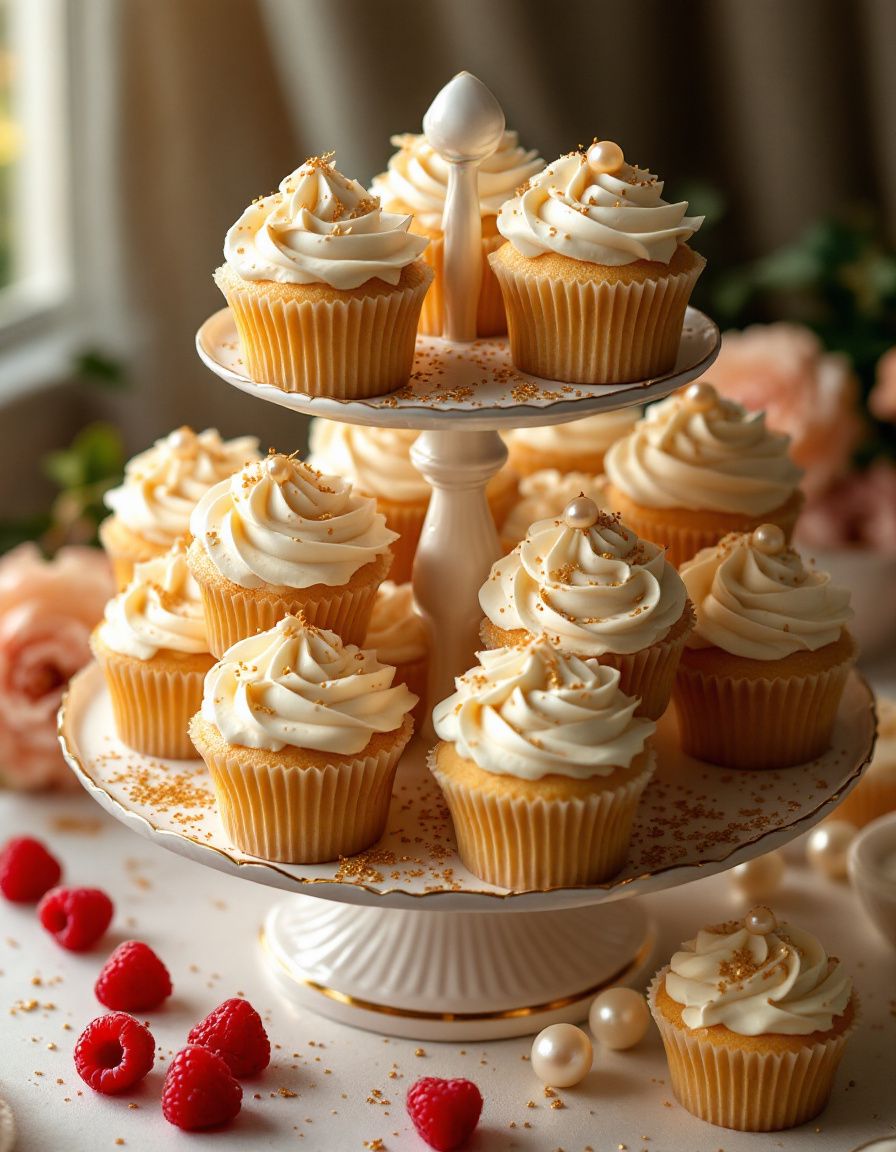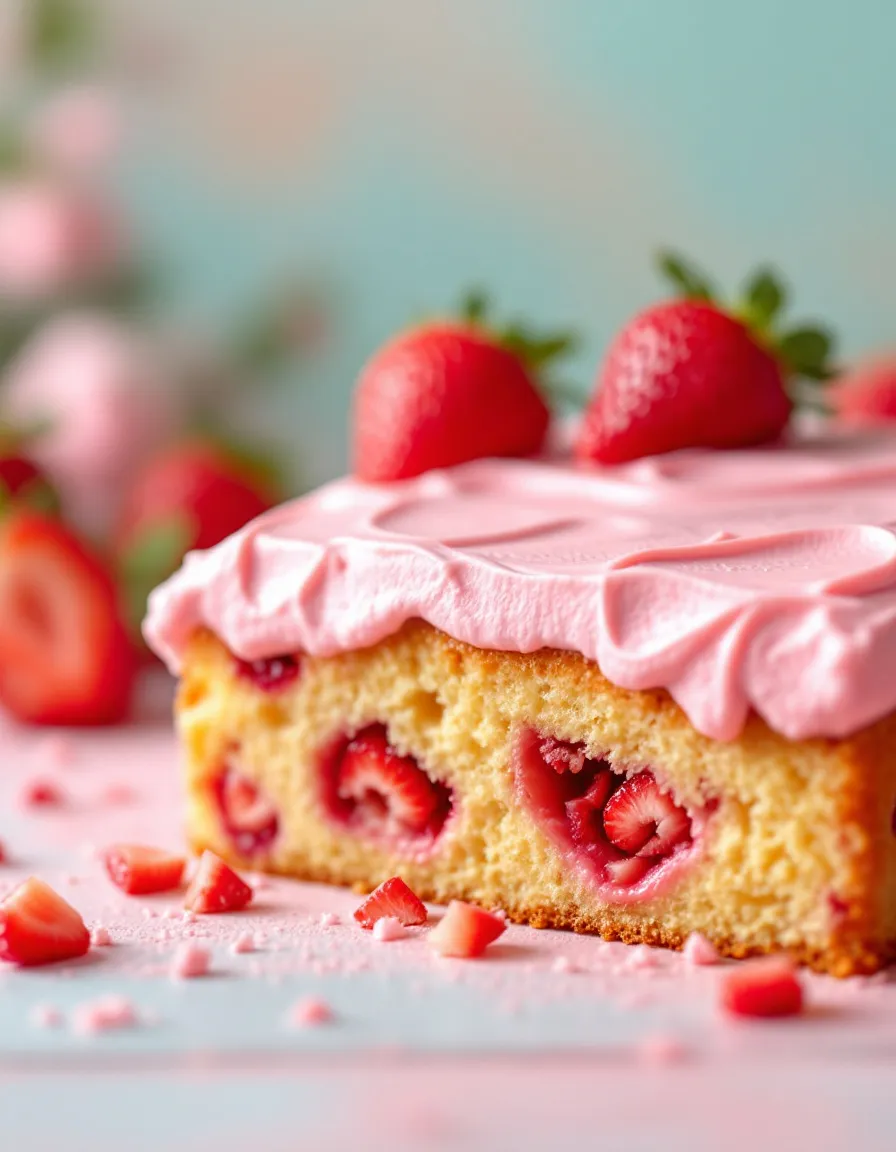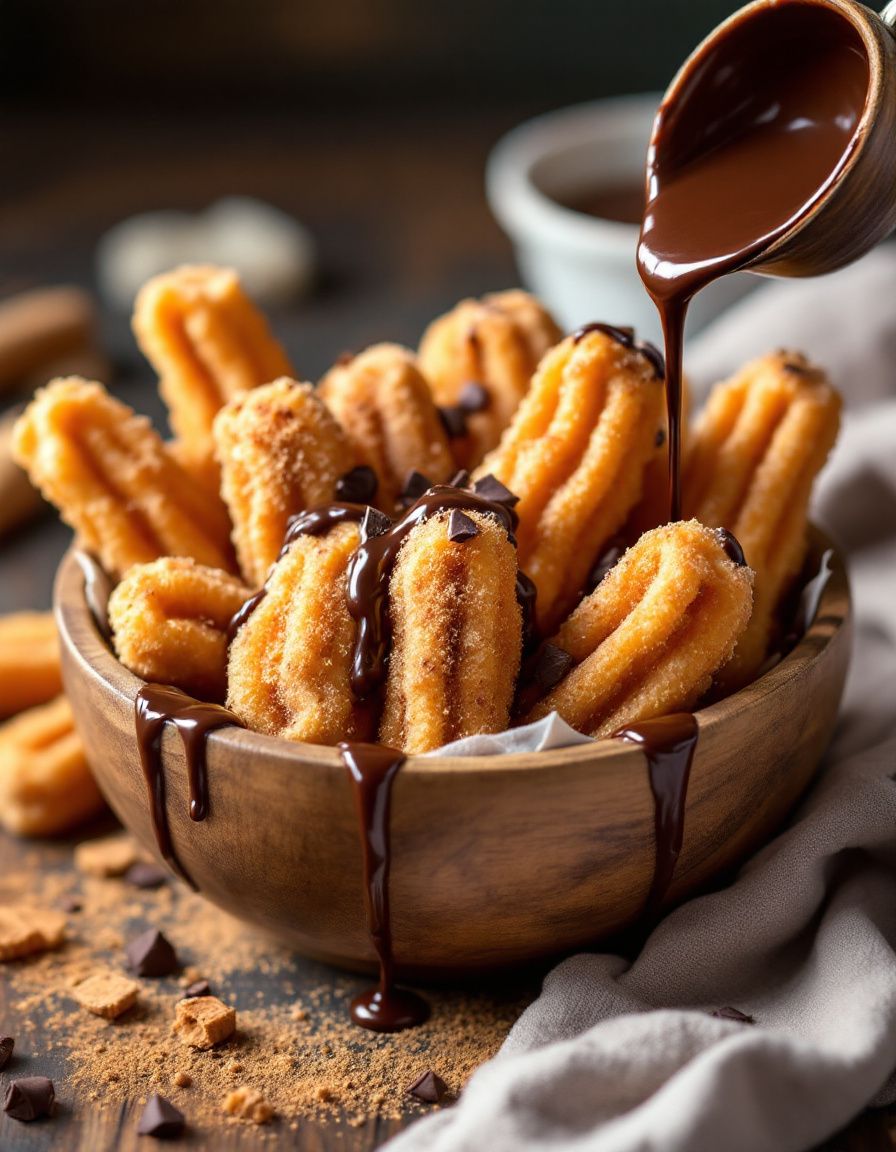Delicious Coffee Cake Cookies with Crunchy Crumble: A Sweet Delight
If you’re on the hunt for an irresistible treat that combines the rich flavor of coffee with a delightful sweetness, look no further than these Coffee Cake Cookies with Crunchy Crumble. Imagine biting into a soft, buttery cookie topped with a crumbly mix that adds a delicious crunch, making each bite a heavenly experience. Not only does this recipe showcase the comforting taste of coffee cake, but it transforms it into portable cookies that are perfect for breakfast or a snack anytime, anywhere.
With hints of cinnamon, the warm aroma of vanilla, and just the right amount of sweetness, these cookies will take your taste buds on a delightful journey. They’re easy to prepare, and the satisfying texture will have your friends and family coming back for more! Serve them warm with a cup of coffee or tea, and you’ve got yourself a warming treat for all occasions.
Quick Recipe Highlights
- Flavor Profile: A delightful blend of rich coffee, sweet vanilla, and a warm, cinnamon kick.
- Texture: Soft, chewy cookies topped with a crunchy crumble that creates an enticing contrast.
- Aroma: The aroma of freshly baked cookies with hints of coffee and warm spices fills your kitchen.
- Visual Appeal: Golden-brown cookies drizzled with a sweet topping, perfect for impressing guests.
- Skill Level Needed: This medium-difficulty recipe requires basic baking skills and attention to detail.
- Special Equipment: Standard baking tools, a mixer, and a baking sheet will suffice for this recipe.
Recipe Overview
- Difficulty Level: This recipe is categorized as medium due to the layering of flavors and the preparation of the crumble topping, ensuring you’ll have a delightful baking experience.
- Category: These Coffee Cake Cookies are perfect for breakfast or can serve as an afternoon snack, making them versatile for any meal.
- Cuisine: Rooted in traditional American baking, this recipe pays homage to the classic coffee cake, famous for its crumbly topping and warm spices.
- Cost: Very affordable to make, with common pantry ingredients; expect a total cost of around $10 for 24 cookies.
- Season: Ideal for all year round, but especially enjoyed in the fall and winter, when cozy flavors are most appreciated.
- Occasion: Perfect for family gatherings, coffee dates, or simply to enjoy at home with a comforting drink.
Why You’ll Love This Recipe
This unique twist on the classic coffee cake brings a wonderful taste and texture appeal that everyone can enjoy. The chewy cookie base exceptionally captures the flavors of traditional coffee cake, while the crunchy crumble topping adds a satisfying crunch that enhances each bite. Paired with your morning coffee or served as an afternoon treat, these cookies are a delightful way to savor your favorite flavors.
Additionally, these Coffee Cake Cookies are incredibly convenient to prepare. Mixing the dough can be done in under 20 minutes, with minimal cooling time required before baking. This simplicity allows you to whip up a batch even on the busiest days, making them an accessible treat for unexpected guests or cozy nights in.
Nutritionally, the use of wholesome ingredients such as butter, sugars, and eggs means each cookie is a balanced indulgence. With moderate sugar and flour content, you can enjoy these treats without guilt, especially when paired with a healthy beverage.
These cookies also shine when it comes to socializing. Perfect for bake sales or potlucks, they bring a sense of warmth and home cooking into any event, inviting sweet conversations over their delightful taste. Friends and family will cherish the moments shared over these cookies.
On top of all that, this recipe is cost-effective. Using pantry staples, it yields a large batch at a low price, ensuring that delicious moments do not break the bank. Whether you share with loved ones or keep them all to yourself, the satisfaction of this delicious treat is worth every penny.
Historical Background and Cultural Significance
The history of coffee cake dates back to the early German settlers in America, where the tradition of pairing cake with coffee became commonplace. As coffee became more popular, so did the recipes that featured it. Over the years, coffee cake evolved to incorporate various textures and flavors, depending on regional preferences.
In American culture, coffee cake holds a special place at social gatherings and breakfasts, often served with coffee during leisurely weekends or festive occasions. The familiarity of the recipe brings nostalgic memories of sharing treats with family and friends, creating bonds over warm conversations.
This cookie adaptation emerged from the desire to enjoy the same comforting flavors of coffee cake in a more portable form. As baking gadgets and technologies have improved, cooks have sought innovative ways to make dessert easier and more accessible, leading to delightful variations such as these cookies.
Regional variations of coffee cake abound, from crumbly New York-style to nutty caramel-infused Texas recipes, but cookie versions allow for even more experimentation. Each new recipe can be a delightful twist on beloved tradition, showcasing individuality in presentation and flavor.
Ingredient Deep Dive
Flour: As the backbone of this cookie, flour provides the necessary structure. Opt for all-purpose flour for the best texture, and consider whole wheat or gluten-free options if desired. Store it in a cool, dry place and always check for freshness before use.
Butter: Butter adds richness and flavor, making your cookies melt-in-your-mouth delicious. Unsalted butter is preferred for better control over salt levels. Ensure to keep it properly stored in the refrigerator, and it can also be frozen for later use.
Sugar: Both granulated and brown sugars play pivotal roles in creating the desired sweetness and texture. Brown sugar adds moisture and a slight molasses flavor, enhancing the cookie’s depth. Store sugar in a sealed container to retain its quality.
Cinnamon: This aromatic spice not only enhances the flavor profile but also boasts numerous health benefits, including anti-inflammatory properties. Ground cinnamon is easy to find in stores, and it can be stored in a cool cupboard for consistent freshness.
Common Mistakes to Avoid
- Using cold butter: Ensure your butter is at room temperature for proper creaming and better texture.
- Not measuring flour correctly: Excess flour can lead to dry cookies; use a scale or spoon-and-level method for accuracy.
- Overmixing the dough: Mix just until combined to keep cookies tender and prevent toughness.
- Skipping the chill time: Chilling the dough helps to maintain shape while baking, preventing spreading.
- Using expired ingredients: Check your flour and baking powder’s expiration dates for the best results.
- Underbaking the cookies: Ensure cookies are lightly golden on the edges to guarantee a perfect texture.
- Not allowing cookies to cool: Letting them rest on the baking sheet can lead to a gooey bottom.
- Inadequate baking sheet preparation: Always line your baking sheets to prevent sticking and for easier cleanup.
- Ignoring the importance of oven temperature calibration: An oven thermometer can keep your baking consistent and prevent surprises.
- Failing to taste the batter: Tasting before you bake allows for adjustments and ensures optimal flavors.
Essential Techniques
Creaming Butter and Sugar: This technique is vital for achieving a light, airy cookie. Begin with room-temperature butter to blend with sugar until fluffy. Avoid overmixing, as this could lead to a greasy batter.
Measuring Ingredients Accurately: Precision plays a key role in successful baking. Use a kitchen scale or measuring cups and spoons to ensure proper ingredient ratios, which yields the best results in both flavor and texture.
Folding in Crumble Topping: When adding the topping, do this gently to maintain the cookie’s structure. Take care not to overwork the cookie dough, ensuring the crumble remains visible and adds texture without becoming too fine.
Baking Time Management: Monitoring your baking times is crucial. Use a timer and keep an eye on your cookies during the last few minutes to achieve optimal doneness without burning.
Pro Tips for Perfect Coffee Cake Cookies
1. Always sift your dry ingredients to prevent clumps and ensure even distribution throughout the dough.
2. For an extra flavor boost, add a splash of vanilla extract to the cookie dough for enhanced aroma and sweetness.
3. Experiment by incorporating nuts or chocolate chips into the crumble for personalized flair.
4. Use a cookie scoop for uniform size and consistent baking results.
5. Refrigerate leftover dough up to a week for freshly baked cookies anytime.
6. Bake in batches to avoid overcrowding, ensuring even cooking for every cookie.
7. Consider using parchment paper on your baking sheets for easy removal and cleanup.
8. Store cookies in an airtight container to maintain freshness and prevent drying out.
Variations and Adaptations
For those seeking regional variations, consider adding spices typical to your favorite regional bakes, such as nutmeg or cardamom. Similarly, seasonal adaptations could involve pumpkin spice in the fall or peppermint bits during the holidays.
Dietary modifications can cater to various preferences; for a gluten-free version, substitute the all-purpose flour with a blend designed for baking. Vegan enthusiasts can achieve the same results by replacing butter with coconut oil and eggs with flaxseed meal.
Flavor variations may include infusing your dough with orange or lemon zest, creating a fresh citrus appeal. For added texture, experiment with adding oats or using different types of sugar.
In terms of presentation, consider glazing your cookies with a simple icing of powdered sugar and coffee for a delectable finish or even frosting them before serving for an extra indulgent touch.
Serving and Presentation Guide
To present your Coffee Cake Cookies enticingly, consider using a tiered stand or decorative plate. This elevates the visual appeal and encourages guests to indulge. Garnishing with a light dusting of powdered sugar adds a whimsical touch.
Traditional accompaniments include coffee or tea, but feel free to explore modern alternatives like flavored iced teas or hot chocolate. Always consider the temperature at which you serve the cookies, as warm cookies offer that delightful melt-in-your-mouth experience.
Portion control is key; serving cookies on small plates with napkins avoids mess and facilitates easy handling. Offering cookies in sets of two or three is an excellent way to encourage guests to try different varieties during gatherings.
Wine and Beverage Pairing
When it comes to wine pairing, a light dessert wine or a sweet Riesling complements the flavors remarkably. The sweetness of the wine harmonizes beautifully with the coffee and vanilla notes of the cookies.
Non-alcoholic alternatives such as vanilla bean soda or cold brew coffee bring out the delightful flavors in these cookies while keeping it light and refreshing. The smooth notes of the cold brew accentuate the coffee flavors, while soda provides a fizzy surprise.
If you enjoy traditional coffee, experiment by brewing with a hint of cinnamon or nutmeg to elevate the drink. Serve at a warm temperature to maximize the aroma and flavor connections with the cookies.
Storage and Shelf Life
For optimal freshness, store your Coffee Cake Cookies in an airtight container at room temperature for up to 5 days. If you want to extend their shelf life, consider freezing them; they last up to 3 months when properly sealed in a freezer-safe bag.
When reheating, place cookies in a microwave for a few seconds or in a preheated oven for a short duration to regain their soft texture. Check for signs of spoilage, such as a change in smell or texture, to ensure safety before consumption.
Make Ahead Strategies
Consider preparing the cookie dough a day in advance, allowing flavors to meld beautifully. Refrigerate the dough in an airtight container, and simply scoop and bake when ready to enjoy fresh cookies.
If you’re using the crumble topping, prepare that in advance too, and keep it stored separately in the fridge. This approach streamlines the baking process and ensures a quicker turnaround for those unexpected guests.
Scaling Instructions
Halving the recipe is straightforward; simply divide all quantities by two and follow the same baking instructions. For larger gatherings, doubling or tripling the recipe will require more baking sheets but maintain the same process time.
When scaling up, consider oven space. If your oven cannot accommodate all trays at once, bake in batches for evenly baked cookies, ensuring consistent quality with each batch.
Nutritional Deep Dive
Each cookie offers a delightful balance of macros, primarily consisting of carbohydrates, fats, and proteins. This delightful treat serves as a perfect energy booster, especially when teamed with coffee in the morning.
Rich in flavor and relatively moderate in sugars compared to other sweet treats, these cookies can fit into a balanced diet when enjoyed in moderation. They provide comfort without excessive calories, supporting your weight management goals.
Dietary Adaptations
For gluten-free options, experiment with almond or coconut flour to cater to those with gluten sensitivities. The resulting cookies will still provide the sweet and comforting flavors you crave without compromise.
Dairy-free adaptations can achieve delicious results through plant-based butter spreads or coconut oil. Finding non-dairy alternatives for eggs, such as applesauce or flaxseed meal, ensures that your cookies remain scrumptious and accessible.
Troubleshooting Guide
If your cookies have a tough texture, it may be due to overmixing the batter or using too much flour. Ensure accurate measurements and gentle mixing for tender cookies.
If flavors aren’t balanced, a pinch of salt can enhance sweetness and bring out the richness in the cookies, aligning the taste profile with your expectations.
Recipe Success Stories
Community feedback has been overwhelmingly positive, with many sharing their personalized adaptations, which adds to the recipe’s charm. Some have successfully incorporated seasonal fruits into the crumble, while others have played around with different nuts for added crunch.
Photography tips from readers show off the cookies’ appealing aesthetics, with beautiful plating and garnishing ideas to inspire others to replicate the deliciousness in their homes.
Frequently Asked Questions
Can I substitute the flour?
Yes, you can use gluten-free flour blends for a gluten-free version without sacrificing taste. Just ensure the blend includes xanthan gum for proper structure.
What can I use instead of eggs?
For vegan adaptations, consider using flaxseed meal mixed with water or applesauce as a replacement for eggs to help bind the ingredients.
How do I store leftovers?
Keep cookies in an airtight container at room temperature for up to 5 days. For longer storage, freeze them to enjoy later.
Can I freeze the cookie dough?
Absolutely! Roll the dough into logs, wrap in plastic wrap, and store in the freezer for up to 3 months. Thaw before baking.
What’s the best way to reheat cookies?
Reheat cookies in the microwave for a few seconds or in a preheated oven for optimal texture. This restores their chewy quality.
Are these cookies suitable for special diets?
Yes! You can easily make them gluten-free, dairy-free, or vegan with the right substitutions while maintaining flavor.
How can I personalize the flavors?
Try adding spices like nutmeg or flavors such as almond extract to explore different taste profiles. Mix-ins like chocolate chunks or fruit can also elevate your cookies.
What’s the secret to chewy cookies?
Using brown sugar helps retain moisture, resulting in chewy cookies. Be careful not to overbake them; they should still be slightly underbaked when you take them out.
Can I double the recipe?
Yes, simply double all of the ingredients and bake as per the original instructions. Adjust baking time based on batch size if needed.
What’s a good pairing for these cookies?
Pair these cookies with a cup of coffee or tea for a delightful treat. They also complement sweet dessert wines and flavored sodas beautifully!
Additional Resources
Explore related recipes such as traditional coffee cakes or frosted sugar cookies for a variety of baking inspiration. Additionally, consulting technique guides on proper cookie baking, including dough preparation and ingredient selection, can enhance your baking skills.
Join the Conversation
We invite you to share your versions of these Coffee Cake Cookies on social media. Don’t forget to tag us for a chance to be featured in our community highlight! Share your favorite baking tips or adjustments you’ve made to this recipe with fellow enthusiasts to inspire others.
The Recipe
Coffee Cake Cookies with Crunchy Crumble
Serves: 24 cookies
Prep Time: 20 mins
Cook Time: 15 mins
Total Time: 35 mins
Kitchen Equipment Needed
- Mixing bowls
- Electric mixer
- Baking sheet
- Parchment paper
- Measuring cups and spoons
Ingredients
- 2 cups all-purpose flour
- 1 cup brown sugar
- 3/4 cup granulated sugar
- 1 cup unsalted butter, softened
- 2 large eggs
- 1 teaspoon vanilla extract
- 1 teaspoon baking powder
- 1 teaspoon cinnamon
- 1/2 teaspoon salt
- 1/2 cup crumble topping (details below)
Directions
- Preheat the oven to 350°F (175°C) and line a baking sheet with parchment paper.
- In a large mixing bowl, cream together softened butter, brown sugar, and granulated sugar.
- Add the eggs and vanilla extract, mixing until well combined.
- In another bowl, whisk together the flour, baking powder, cinnamon, and salt.
- Gradually add the dry ingredients to the butter mixture until just combined.
- Scoop tablespoon-sized balls of dough onto the prepared baking sheet, spacing them evenly.
- Sprinkle the crumble topping generously over each cookie dough ball.
- Bake in the preheated oven for 12-15 minutes, or until the edges are golden.
- Let cool on the baking sheet for a few minutes before transferring to a wire rack to cool completely.
Recipe Notes
- The crumble topping can be made by mixing together 1/2 cup of flour, 1/2 cup of brown sugar, 1/4 cup of melted butter, and a pinch of cinnamon until crumbly.
- For softer cookies, slightly underbake them and allow them to cool on the baking sheet, as they will firm up while cooling.
